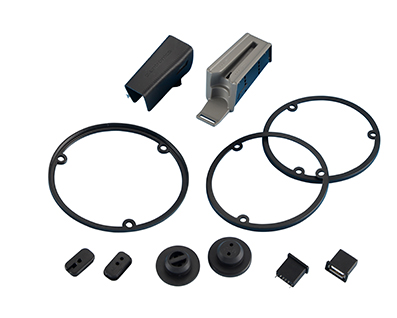
What are the common failure types of O-ring
The combination acting on o-rings can be said to be complex and difficult. Therefore, both o-ring compounds and sizes should be tested in the real-world environment they serve. The following liquid silica gel manufacturers share the common types of O-ring failure that may occur.
Silicone rubber sealing strip Introduces the failure types of O-ring:
There is no apparent evidence of failure of the seal
Failure modes: For the various types of seal failure, this is the most difficult to diagnose because the problem results in invisible O-rings with no visual clues.
O-ring failure types, source of problems: insufficient compression, tolerances and eccentricity During the molding process, the o-ring left parting line flashes, and the volume relationship between the seal and the gland is improper.

Recommended solutions: Maintain the recommended compression range for application, determine the amount of tension reduced by increasing the tension of the O-ring cross section, determine the component tolerance as it directly affects the seal cross section, consider the design to ensure that the compression is still contained within the recommended compression range to the maximum component shift. Avoid parting line in o-ring groove is often mismatched zone. Ensure that the o-ring gland volume exceeds the o-ring seal expansion volume to allow for no seal damage.
Compressor unit
Failure mode: A common failure in static and dynamic sealing applications, compression of the O-ring on both sides of the cross section produces a flat surface.
Source: The compression performance of the selected elastomer is poor. Low heat resistance of the material, excessive expansion of the sealing ring material in the system fluid, too much extrusion to achieve sealing, incomplete curing (curing) of the O-ring material in the production process.
Silica gel sealing ring manufacturer introduces o-type sealing ring failure type, recommended solution: use low elastic body. Specify an O-ring material to resist heat generated by handling and friction, re-examine the chemical compatibility system of the O-ring material, if possible, reduce o-ring squeeze, and check the correct physical properties of the incoming O-ring seal.